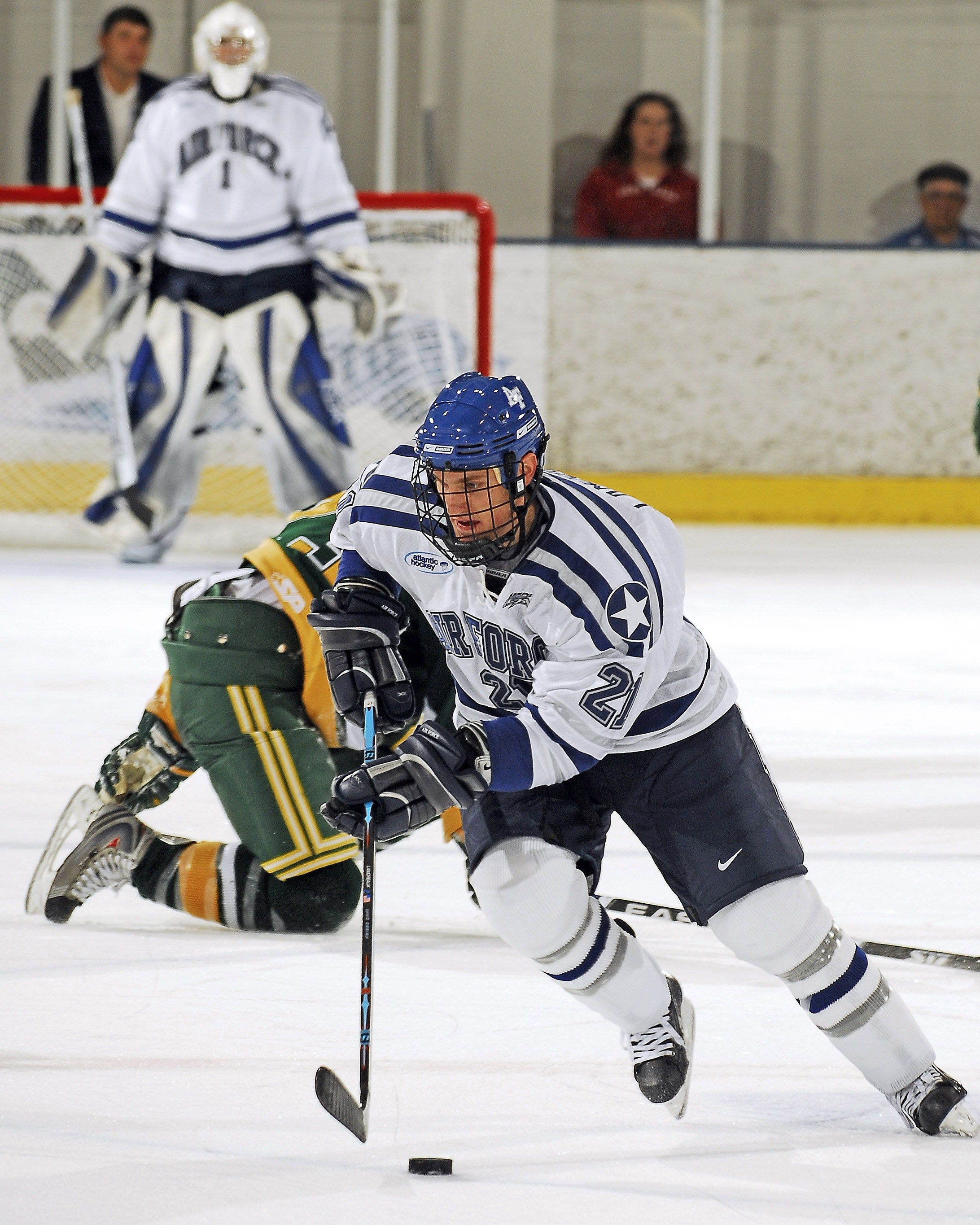Just as hockey forwards use their vision to open up defenses, find teammates on the move, and dodge hits, so too do defenders and goaltenders use their vision and skill to counter those forwards with strategy and moves of their own.
In previous hockey eras, defense meant hanging back, clearing players out from in front of the goaltender, and maintaining a physical presence in all three zones to limit another team’s playmaking ability.
Players like Bobby Orr and Brad Park changed what it meant to be a defensive player; they were often the offensive and defensive focal point of their respective teams, playing a physical and speedy game on defense while carrying the puck in transition and setting up plays or scoring while on offense.
These days, that mantle is carried by players like Cale Makar, whose passing ability and stick handling are a part of what makes the Colorado Avalanche must-watch hockey. He’s all over the ice, seeking out opportunities on defense and capitalizing on them at the other end.

At this point in the evolution of the sport, good defensemen help their team score as much as they prevent the other team from doing so.
Much as the vision training I previously discussed helps bolster forwards’ skill and perception, so too can it help defenders to contribute on both sides of the puck.
If you can make passes in transition, find your open teammates, and clock hits coming your way when taking corner battles, you can help your team keep the pressure up on the attack.
One notable difference between forward and defensive roles is motion: when playing offense, defenders patrol the outside of the zone, scooping up loose pucks, providing a passing outlet for harried forwards, and containing or disrupting the opposing team’s breakouts.
When playing within their own zone, defenders play farther back in the zone, clearing out the net front and assisting in corner battles. In both instances, players work within a set area and rotate based upon puck movement. And because defenders cover high-percentage shooting areas, they are expected to block shots when able to do so, a skill that requires anticipation, tracking, and quick reactions to a) make the play and b) keep yourself safe.
To sum it up, defenders always have their heads up, on a swivel, tracking puck movement and anticipating where a play will go. The top defenders can break up an opponents play, retain possession, and push their team up ice for a scoring opportunity.
In short, just because you aren’t a forward doesn’t mean that you won’t benefit from the vision training described in the previous post. Defenders often operate as patrollers rather than chasers, meaning that the ability to track a puck through traffic is a critical component of the role.
The skill is even more important for goaltenders who are expected to track the puck and react to shots in a split-second.
Practice training with the MaxBP at a distance to enhance that exterior vision: if you’re using colored balls or tracking disks, call out the color as soon as you’re able and make rules to catch only specific colored balls or disks that come your way. Or do away with the catching and solely practice identification of rapid movement.
Set up the machine in your peripherals and do the same thing: identify what crosses your line of sight as soon as possible and follow the movement across your body. Pivot with the ball to simulate movement in a game scenario.
For an extra wrench, add in a few obstacles that pull the eyes (i.e. cones) to make sure your focus remains on the small object within your field of view.
If you’re training as a goaltender and you’ve got a surface, practice your slides into position to keep the tracker or puck square with your body. Set up a barrier in front of yourself that you’ll need to see around or work past; if you’ve got a training buddy who’s also working on positioning, simulate a net front situation where they’re actively attempting to obscure your vision paths. Practice getting out of your butterfly while tracking as well.
Many current and former professional goalies spend the offseason training vision and reaction time without facing a shot or putting on pads, keeping their mind and reflexes active while healing up from the rigor of an NHL season.
Vision training can be done any day, any time, even while rehabbing an injury and is a way to ensure your vision and reflexes stay at a high level while you’re away from sports for whatever reason. Products like MaxBP add a fun twist to that training and open the door for numerous adjustments to focus on very particular aspects of vision and reaction time.

